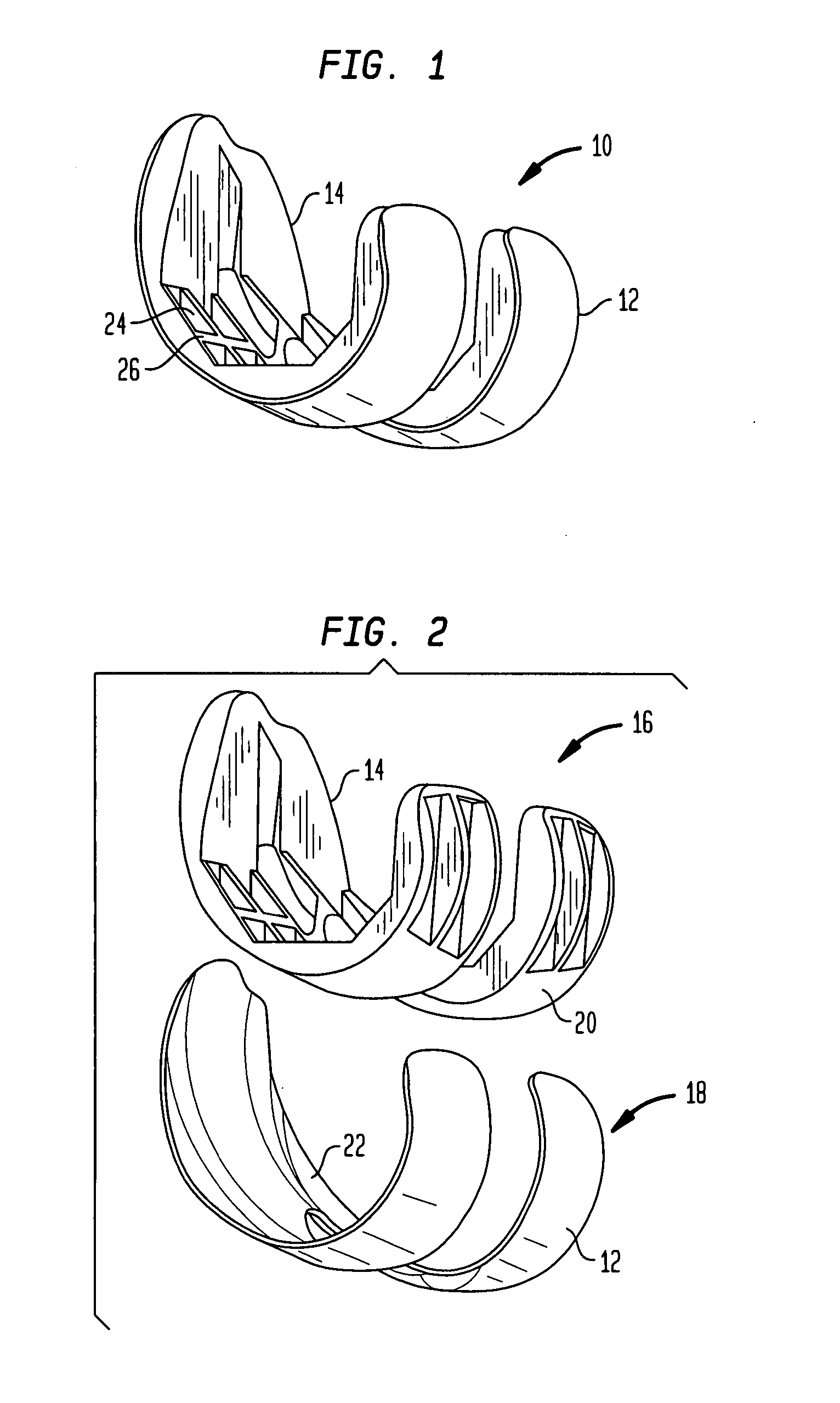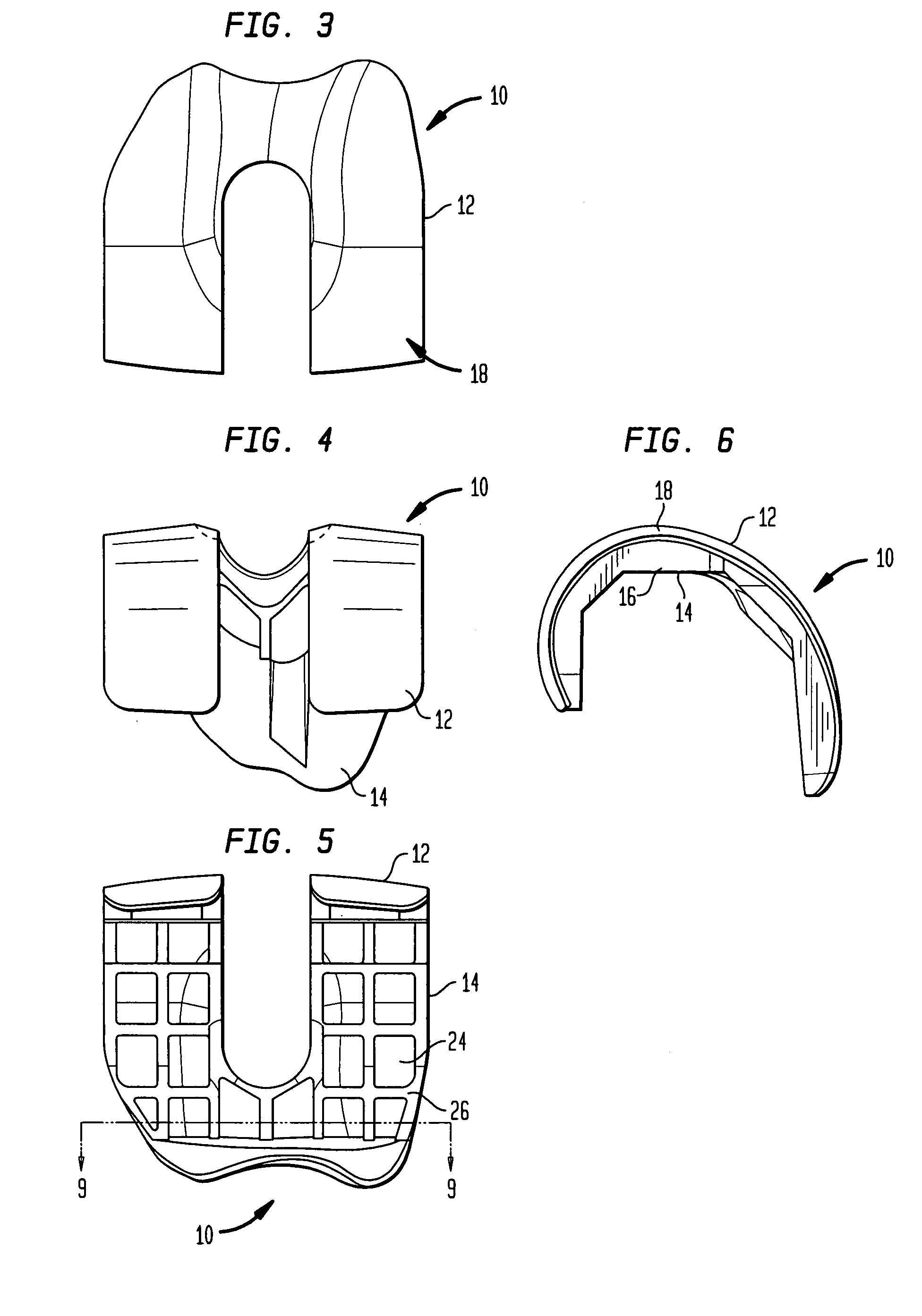Composite joint implant
a joint implant and composite technology, applied in knee joints, prostheses, medical science, etc., can solve the problems of large overall cost increase of trial components, large secondary operation required to impart the necessary geometry onto these materials, and relatively heavy components
- Summary
- Abstract
- Description
- Claims
- Application Information
AI Technical Summary
Benefits of technology
Problems solved by technology
Method used
Image
Examples
Embodiment Construction
[0025] In describing the preferred embodiments of the subject matter illustrated and to be described with respect to the drawings, specific terminology will be resorted to for the sake of clarity. However, the invention is not intended to be limited to the specific terms so selected, and it is to be understood that each specific term includes all technical equivalents which operate in a similar manner to accomplish a similar purpose.
[0026] Referring to the drawings, wherein like reference numerals represent like elements, there is shown in FIGS. 1-6, in accordance with a preferred embodiment of the present invention, more particularly, a femoral implant 10 used during a TKR procedure. The particular implant shown is preferably used as a trial implant; however it may be used as any type of femoral implant. Generally, the implant of the present invention has two primary surfaces thereof, including an articulating surface 12, and a bone engaging surface 14. Preferably, articulating su...
PUM
| Property | Measurement | Unit |
|---|---|---|
| weight | aaaaa | aaaaa |
| weight | aaaaa | aaaaa |
| thickness | aaaaa | aaaaa |
Abstract
Description
Claims
Application Information
 Login to View More
Login to View More - R&D
- Intellectual Property
- Life Sciences
- Materials
- Tech Scout
- Unparalleled Data Quality
- Higher Quality Content
- 60% Fewer Hallucinations
Browse by: Latest US Patents, China's latest patents, Technical Efficacy Thesaurus, Application Domain, Technology Topic, Popular Technical Reports.
© 2025 PatSnap. All rights reserved.Legal|Privacy policy|Modern Slavery Act Transparency Statement|Sitemap|About US| Contact US: help@patsnap.com



